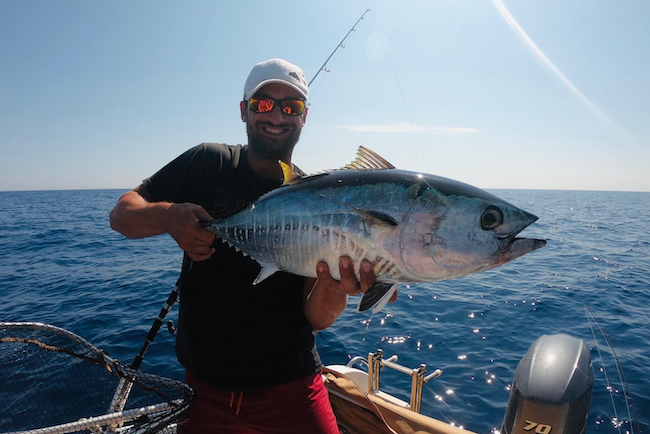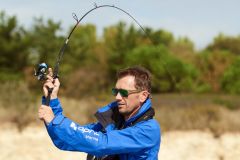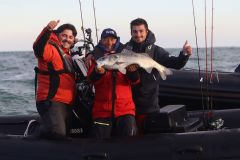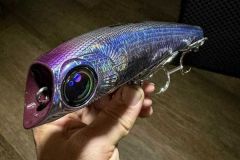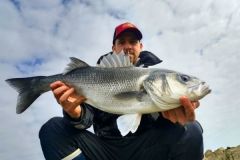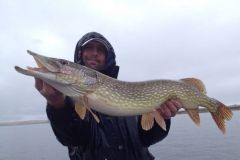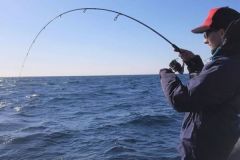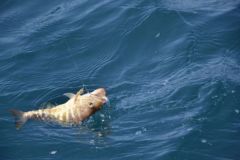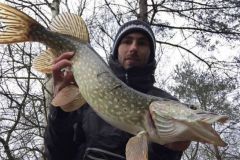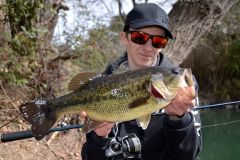The operation of a surface hunt
Fishing on the hunt consists of navigating, observing and moving quickly on the visible fish hunts. Predators surround schools of small fish, concentrating them. By pushing the prey towards the surface, they literally corner them on this natural barrier and rush in turn in the school to burst it and seize the most disoriented individuals.
How to spot a hunt?
These hunts can be spotted from a distance (sometimes several kilometers) thanks to the flashes they provoke but especially thanks to the birds which, with their view of the sky, spot very effectively the shoals of prey pushed towards the surface.
The fishing process consists of a lot of observation. One often spends long hours scanning the horizon for signs of activity. We follow the birds when they gather (some radars can detect the groupings of birds), we wait patiently for the shot that will trigger the first hunt spotted and finallyâeuros¦ 300 meters at 15h, it's tuna!!! Everybody hangs on and we leave full throttle towards this broth which is formed.
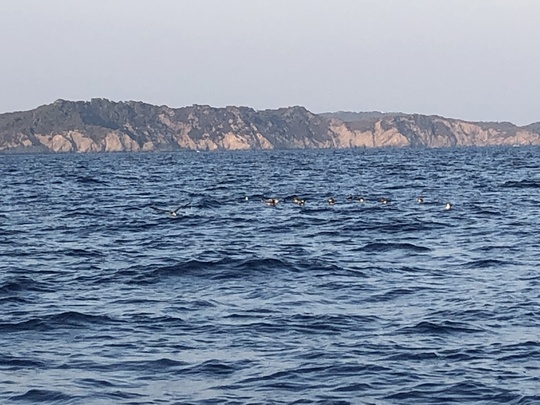
A good approach, a condition for success
The approach to the hunts is a crucial element of success. It is necessary to be very reactive because the hunts. If some can last several minutes, most last only a few tens of seconds. You have to stop the boat far enough away not to scare the fish but close enough to be able to launch on the hunt. Anticipating the direction the fish are heading and the direction of the boat's drift allows you to stay within range of the fishing area as long as possible.
Some well executed approaches sometimes allow you to wedge the school of prey under the boat and thus find yourself in the middle of the action. When you see your lure fall in this rush, time stops.
Often after the hunt a shower of scales suspended in the water attests to the carnage that has just taken place. In spite of the feeding frenzy that these hunts constitute, the fish can be very selective on the lures and the animation, but when one has found, the sport can begin!
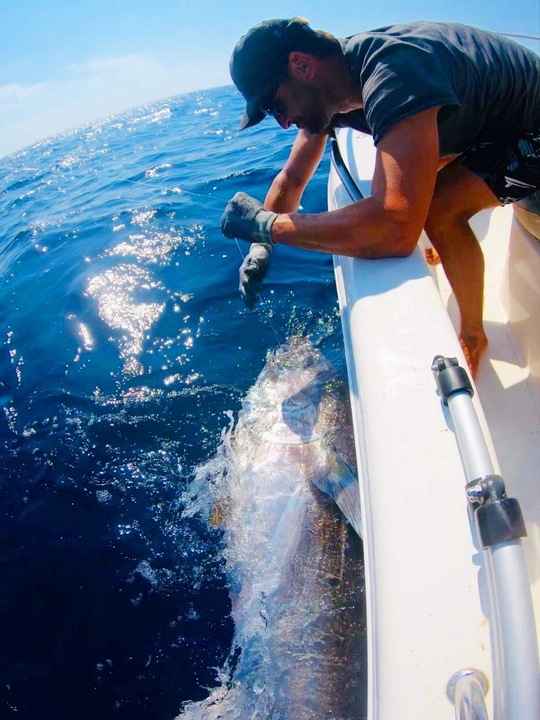
Sport fishing at its best
Rarely does the term sport fishing take on such meaning as when you engage in a fight with a tuna. You have to hook hard! (The first rushes are fast, long and exhausting for the fisherman, in spite of powerful brakes well tightened! A fighting belt is essential. Beyond a certain weight you have no choice but to pass the rod at the risk of completely tetanizing and losing the fish (or the rod).
These fish are so powerful that we rather look for the small ones which offer beautiful fights but do not leave (or less) soreness to the fishermen and allow to chain the catches rather than to fight 5 hours with a monster.
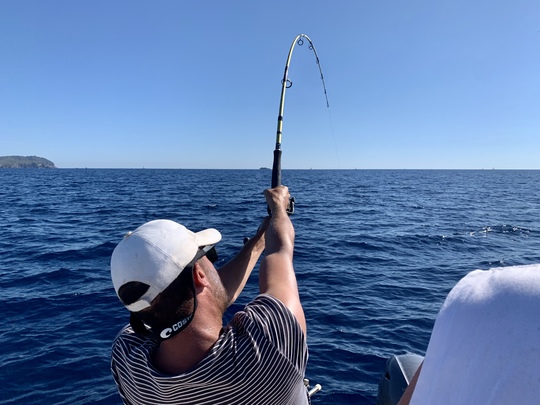
The importance of proper fish handling
Upon arrival at the boat, these fish must be handled with care. A tuna that is going to be released should not be brought on board, otherwise it will sink into the abyss without much chance of survival at the time of release.
If you want a souvenir photo, take it in the water, the fight is often hot and the Mediterranean climate lends itself well. Be careful also during the handling of these fish, which are sharp, angular and powerful, and can leave cuts (a pair of gloves is not superfluous).
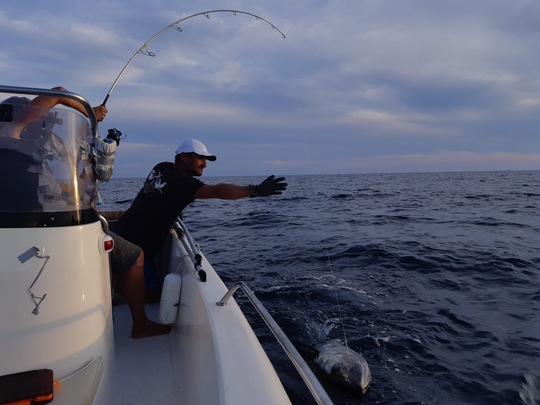
The added value of the Fishing Guide Instructor
It is easy to understand the importance of hiring a guide to practice this complex fishery, which requires a good knowledge of the territory and of the technique to be used. He will also know how to direct you towards other fishing when the wind conditions do not allow you to go offshore or when the fish are simply not present.
You can, in the shelter of a bay, try your hand at fishing for wolffish, barracuda, amberjack or even dolphinfish around the FADs, or fish deeper in search of pagras and dentex. So many exciting alternatives to save a day.
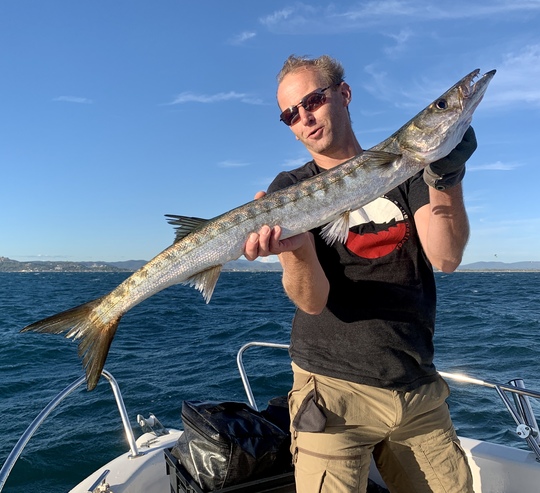
I always told myself that I would save exotic fishing for later in my fishing life, that it was too expensive, that I didn't need to add another addiction for an additional fishing technique, that my thing is freshwaterâeuros¦
When I was first proposed to go fishing on a hunt in the Mediterranean, I didn't realize that by accepting I had just put a foot in something I had forbidden myself. The trap was well thought out. The Mediterranean is not so far away and the images we have of exotic fishing remind us more of tropical landscapes than the port of Toulon. I was not aware then that all the ingredients were there to find similar sensations to the most prestigious destinations. I was fooledâ?¦ but I donâ??t regret anything.
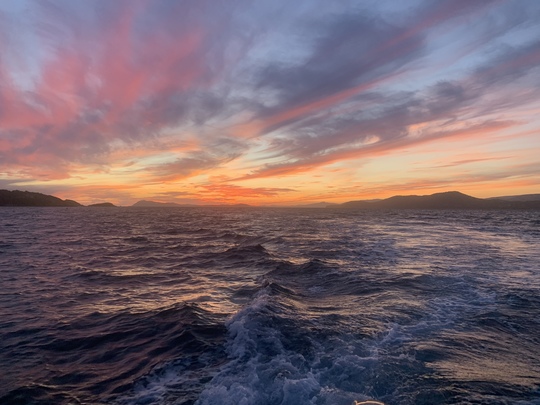
Equipment update
This type of fishing requires a well-motorized boat (>70 hp), which is easy to handle and stable in the waves in order to move quickly on the flushes.
A 2.40 m rod and reel set (between 50 and 80 pounds) with a high retrieve ratio and a strong drag (10 kg) filled with 300 m of braid in 50-80 pounds will do the job.
The lures to be favored are jigs, minnows, soft lures and poppers between 8 and 20 cm depending on the species predated by the tuna. The arming of these lures is essential, it is often necessary to rearm the commercial lures in simple hooks very solid (1 to 3/0 according to the size of the lure).
The use of a broken ring coupled with a rolling swivel avoids many disappointments and helps to avoid stalling due to the leverage of the lure during the fight (you can also double the broken rings between the lure and the hooks or use assist hooks to minimize this problem).
The best way to set up your lure is to attach a 150-pound shock-leader to the bottom of the line, between 1.5 and 3 meters long. This last one offers an elasticity to the rig to compensate for the powerful rushes and avoid the breakage. It is also discreet and relatively abrasion resistant. The safest leader knot for this type of fishing is the FG knot. It is not the easiest knot to tie, but its effectiveness is well established.
The use of a fish-grip is essential to maintain the fish and handle it in good conditions).
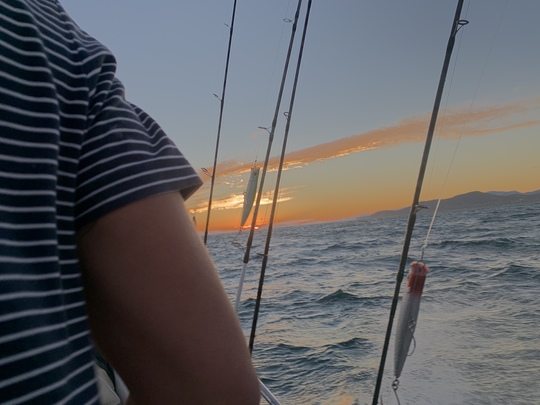
Seasonality and legislation
The recreational tuna fishing season generally runs from June 1 to October 15.
A request for authorization to "fish and release" must be addressed to the Direction Interrégionale de la Mer Méditerranée for No-Kill fishing.
In order to retain a fish, an application for a ring and an authorization to catch, retain on board and land bluefin tuna must be made.
The conservation of fish can be done between July and August and between September and October depending on the year. The mesh size is fixed at 30 kg or 115 cm.
Bonito and pelagic tunas are not subject to a mesh and do not require any particular approach. However, one must beware of the resemblance between juvenile bluefin tuna and bonito. A mistake that can be very expensive!
First of all, it is necessary to inquire with the maritime affairs to respect the legislation in force on your fishing place and at the precise moment.

 /
/ 